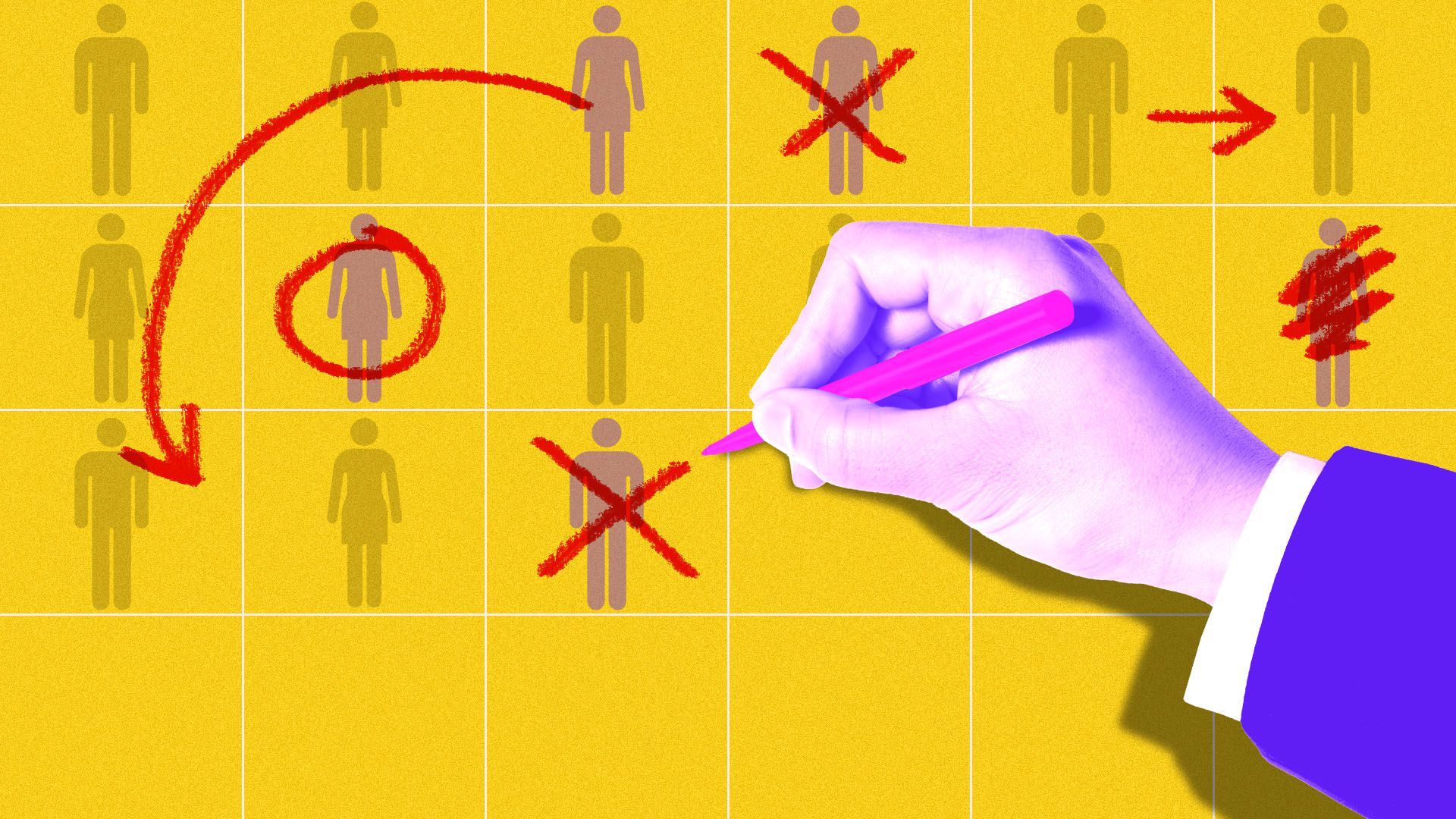| | | | | | | Presented By Caliber — The Wealth Development Company | | | | Axios Markets | | By Matt Phillips and Emily Peck · Apr 11, 2022 | | Happy Monday folks. How'd the weekend go? Emily took a drive to the local candy shop, where gummy bear prices have thankfully stayed stable through all the crises of these past few years. Today, however, we're talking about price trends that are far less sweet. Let's do this. 🎧 Listen now: The latest episode of "How It Happened: Putin's Invasion" examines why Western sanctions and condemnations intended to pile pressure on Vladimir Putin instead seem to be rallying Russians behind him. Today's newsletter is 1,150 words, 4.5 minutes. | | | | | | 1 big thing: Get ready for a nasty inflation report |  Data: Bureau of Labor Statistics; Chart: Axios Visuals A new inflation reading is due tomorrow, and it may be a doozy. The Consumer Price Index for March will reflect the surge in energy prices tied to the war in Ukraine. And that is likely to push the headline number to yet another multi-decade high, Axios' Neil Irwin writes. Why it matters: The biggest question facing the economy now: Will inflation come down on its own, or will it require the Federal Reserve to bring on a recession? The new numbers will provide fresh evidence of which reality we're living in. - The report will also show whether forces that initially drove up prices — mainly supply disruptions affecting the cost of goods — are starting to fade and if price pressures are now driving service costs up.
Details: Analysts surveyed by FactSet expect the release to show 8.4% inflation over the last year. That would be the highest inflation rate since December 1981. The rate was 7.9% for the year that ended in February. - Excluding food and energy, the forecast is for 6.6% inflation.
State of play: The path forward hinges on what is going on with underlying inflation trends — especially dynamics around wages and the ability of businesses to raise prices — rather than geopolitical events. - For durable goods, relief could come if and when supplies stabilize. In one favorable sign, used car prices declined in March according to a much-watched index (more on that from Matt below).
- Still, services excluding energy products account for 57% of CPI, versus only 13% for durable goods. so it wouldn't take much for the services sector to supplant goods as a key driver, preventing overall inflation from coming down.
Case in point: Rent price increases have accelerated in the last three months, and rose 0.6% in February. That reflects tight housing supply and rising incomes. So long as rent costs keep rising, it will keep inflation from easing much. - Prices are also rising for services as varied as health insurance and hotel stays. The fading of the pandemic may mean consumers shift more of their spending toward services, and push up prices amid finite supply.
- Companies that sell those services want to make up for rising wage costs and enjoy the pricing power that comes with robust demand.
The bottom line: High top-line inflation will get the headlines tomorrow morning. But the more important question is whether services inflation picks up momentum, as durable goods inflation fades. Go deeper. |     | | | | | | 2. Catch up quick | | 🚨 Elon Musk "has decided not to join" Twitter's board. (Axios) 🪓 S&P cuts Russia's rating again as it nears default. (Reuters) 💵 Saudis had big doubts before investing in Kushner fund. (NYT) |     | | | | | | 3. Charted: Softening used car prices |  Data: Cox Automotive; Chart: Axios Visuals High used car prices are a post-COVID fact of life — but a key data point offers some hope, Matt writes. Why it matters: An unprecedented surge in used vehicle prices was an early and essential driver of post-pandemic inflation. What's happening: The Manheim Used Vehicle Value Index, a gauge of wholesale market prices for used vehicles, dropped for its second straight month. - Wholesale prices for used vehicles — Manheim adjusts for age, mileage and other attributes — are now 5.4% lower than their January peak of $21,754.
- Typically, Manheim's prices, which reflect sales to auto dealers, are a leading indicator of the prices consumers see at the lot a couple of months later.
The big question: Whether the recent dip proves short-lived, given the fresh supply chain snarls set off by the war in Ukraine and China's most recent round of lockdowns. |     | | | | | | A message from Caliber — The Wealth Development Company | | What to do with your capital gains of $50K or more | | |  | | | | There are now very attractive ways to keep more of your capital gains and put them to work, while turning the tax man away for years. Unlock tax incentives and compounding potential on your current gains. Learn more in this investor guide. | | | | | | 4. How the U.S. can make billions from selling oil |  Data: FactSet; Chart: Erin Davis/Axios Visuals The U.S. could make more than $5 billion by waiting a few years to replenish its oil reserves, Axios' Felix Salmon writes. Why it matters: President Biden has committed to sell 1 million barrels of oil per day from the Strategic Petroleum Reserve for the next six months. All of that oil will need to be replaced, somehow; ideally, at a profit. By the numbers: If the U.S. sells 180 million barrels in total, then at the current price of $98 per barrel that would work out to total proceeds of about $18 billion. - Oil for delivery in the future, by contrast, is worth much less. A barrel of oil in a year's time is worth less than $90; in two years' time, it's closer to $80.
- Traders are happy to enter into a contract to deliver oil in 2029 at less than $67 per barrel.
How it works: Oil sold from the SPR needs to be replenished somehow. According to the rules governing such purchases, "If DOE determines there is a high probability that the cost to the Government can be reduced without significantly affecting national energy security goals, DOE may contract for delivery at a future date." - In other words, the government can sell oil at $98 now, enter into a contract to buy it back at $67 in a few years' time, and thereby guarantee itself a profit of $31 per barrel.
- If it did that for all 180 million barrels, the profit would come to $5.6 billion. If the government didn't want to wait that long to replenish its reserves, even refilling at the March 2023 price of $89 per barrel would represent a profit of $1.6 billion.
What they're saying: "The US would make a lot of money by opening the spigots wide on the SPR for a month, and simultaneously buying futures to replenish it," tweets Stanford's Erik Brynjolfsson. The bottom line: The more oil the U.S. sells at current inflated prices, the more profit it can make by buying back the oil at lower prices in the future. |     | | |  | | | | If you like this newsletter, your friends may, too! Refer your friends and get free Axios swag when they sign up. | | | | | | | | 5. Goldman's board diversity push is working |  | | | Illustration: Sarah Grillo/Axios | | | | Goldman Sachs is succeeding in its efforts to diversify corporate board rooms, but still has a ways to go inside the bank. - "There's a lot to be done internally," Ilana Wolfe, who heads up corporate board engagement at the bank, tells Emily.
Catch up fast: More than two years ago Goldman Sachs said it wouldn't take a company public in the U.S. or Western Europe if there wasn't at least one woman, LGBTQ person or underrepresented minority member on its board. - Since then, it's taken 290 firms through the process. All met that requirement, Wolfe said.
- Last summer, they bumped it up to two underrepresented directors, with at least one a woman.
- Wolfe and her team helped find more than 50 minority or women directors for clients, she said. "It's something we feel is required to be a successful company," she said.
The big picture: With one of California's board diversity laws struck down, and another being challenged — private efforts may be the last strategy standing when it comes to revamping these corners of power. Goldman itself still is far away from gender equality. While the bank's board of directors is diverse — 6 out of 14 members are women — most of its leaders are male. Just 9 out of 34 members of its management committee are women. |     | | | | | | A message from Caliber — The Wealth Development Company | | What to do with your capital gains of $50K or more | | |  | | | | There are now very attractive ways to keep more of your capital gains and put them to work, while turning the tax man away for years. Unlock tax incentives and compounding potential on your current gains. Learn more in this investor guide. | | |  | It's called Smart Brevity®. Over 200 orgs use it — in a tool called Axios HQ — to drive productivity with clearer workplace communications. | | | | | | Axios thanks our partners for supporting our newsletters. If you're interested in advertising, learn more here.
Sponsorship has no influence on editorial content. Axios, 3100 Clarendon Blvd, Suite 1300, Arlington VA 22201 | | | You received this email because you signed up for newsletters from Axios.
Change your preferences or unsubscribe here. | | | Was this email forwarded to you?
Sign up now to get Axios in your inbox. | | | | Follow Axios on social media:    | | | | | |
No comments:
Post a Comment